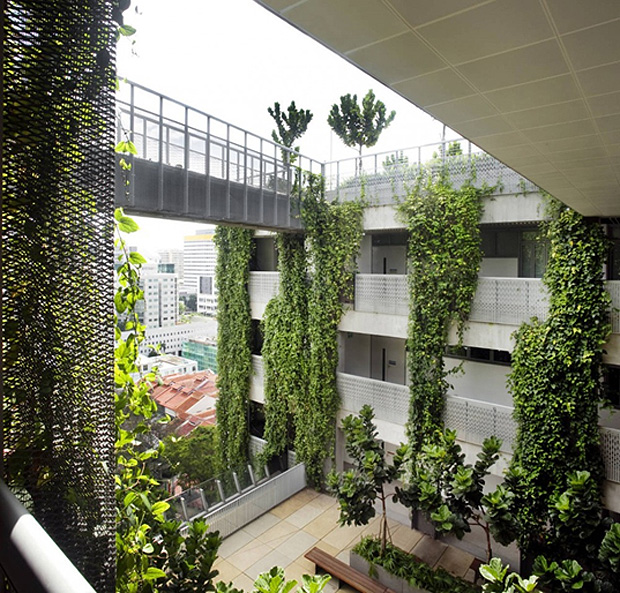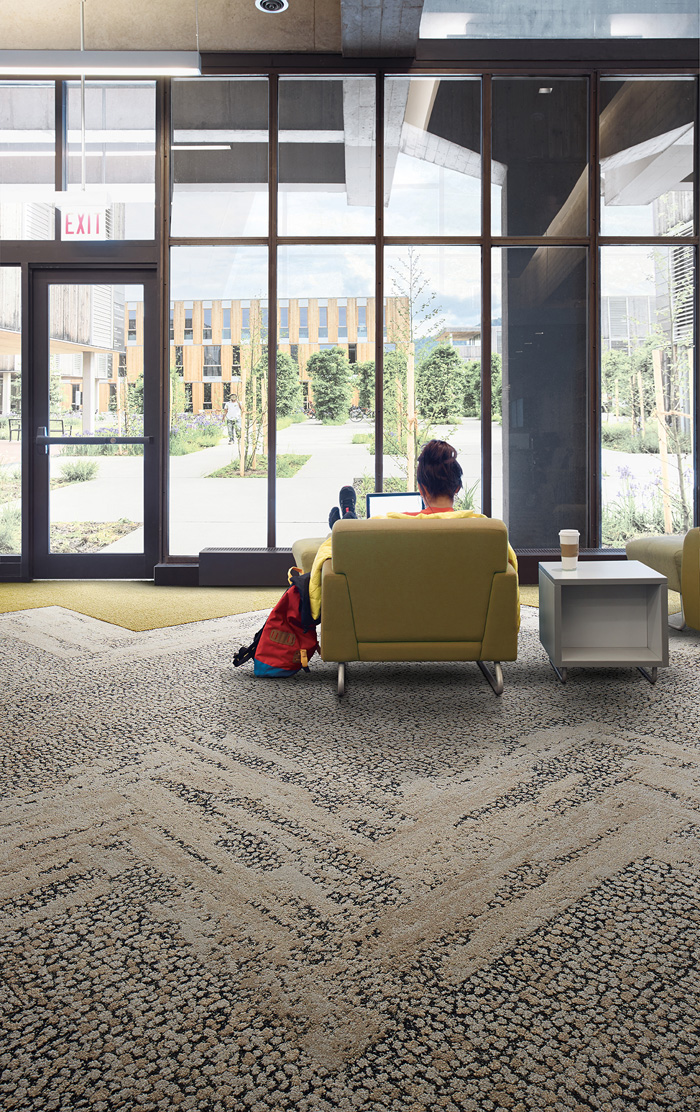Educational buildings can vary vastly in scale and capacity; from small village nurseries, through to schools that cater for hundreds of students and universities where the campuses can be like self-contained cities. What they have in common, however, is that each of them contains a combination of students who are there to learn, staff that are there to teach, and facilities support staff that are there to ensure both of these activities can happen now and into the future.

Singapore school of the arts – Woha
Research demonstrates that attentional capacity (which is essential for cognitive functioning) is restored when children/students engage with nature. This means they are less easily distracted and are more able to manage daily tasks. However, many educational institutions are reducing outdoor space and land, which is either being sold to raise funds, or developed to accommodate increasing numbers of students. If we as architects and interior designers want to apply Biophilic principles in educational settings we need to consider how spaces can incorporate natural elements, or take advantage of limited exterior spaces.
There are a number of key recommendations for incorporating Biophilic Design into education spaces:
Increase natural light
Maximise the use of skylights, windows and reflective surfaces – research shows that optimising exposure to daylight alone can increase the speed of learning by 20-26% (Wells & Evans, 2003). It can also improve attendance by an average of 3.5days/year and test scores by 5-14%.
Create views out to nature
These need to be at appropriate heights for the students and staff – whether this is to gardens, courtyards with planters, or window boxes – in one study (of office workers) those with views of vegetation performed 10-25% better in mental function and memory recall tests. Whilst studies have also suggested that for younger children regular experiences in nature can also reduce the impact of ADHD.
Introduce indoor plants
Plants can be a highly effective addition; trials have found that plants in classrooms can lead to improved performance in spelling, mathematics and science of 10-14%. Features such as green walls can enhance a learning space visually, improve air quality which helps concentration and reduce distracting noise to improve acoustics in education spaces.
Include natural elements
Where possible use natural materials such as tactile wooden furniture, exposed beams and stonework to stimulate the sense of touch. Tactile stimulation can be used to reduce stress, to energize or to relax (Spence, 2010).
Incorporate references to nature
Where a primary experience of natural elements are not available the use of natural textures, patterns, colours and images in floor and wall coverings as a secondary alternative to the real thing is shown to aid psychological recuperation.
Create safe spaces
Define zones according to activities i.e. for focus and productivity, or relaxation and restoration. Restorative time away from studies/work can enhance productivity. Muted colours, soft furnishing and low lighting can be used to create retreats from activity during the day that will revive staff and students alike.
Human-focused environments which take the well-being into consideration will improve the daily experience of its users; students and staff alike. For institutions, incorporating Biophilic principles can have numerous benefits:
- Day lit spaces have reduced energy consumption & costs.
- An improved educational experience is more likely to lead to on-going engagement with education – benefitting the student, the institution and the economy on the whole.
- Improving the working environment for staff can reduce staff turnover and the subsequent replacement costs.
As educational institutions are increasingly becoming privatised the distinction between the design of private and public sector buildings is dissolving. At the same time businesses at the vanguard of design, such as Apple, Google, and Amazon are beginning to refer to their headquarters as “campuses”. I suggest that architects and designers take inspiration from this new breed of leading business campuses, where the aim is optimal productivity and innovation, health and well being as a demonstration of how to incorporate Biophilic Design into future education settings.
Have you had a positive education experience in a particular space? What was it about the space that made it such a good space to learn in? I’d like to hear your thoughts on this emerging field of design of incorporating nature and education.
